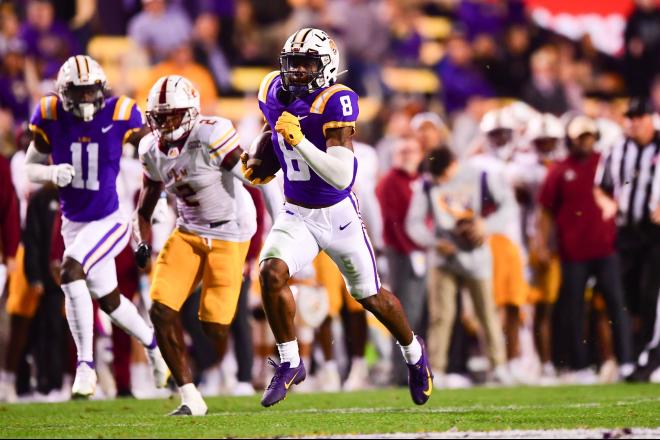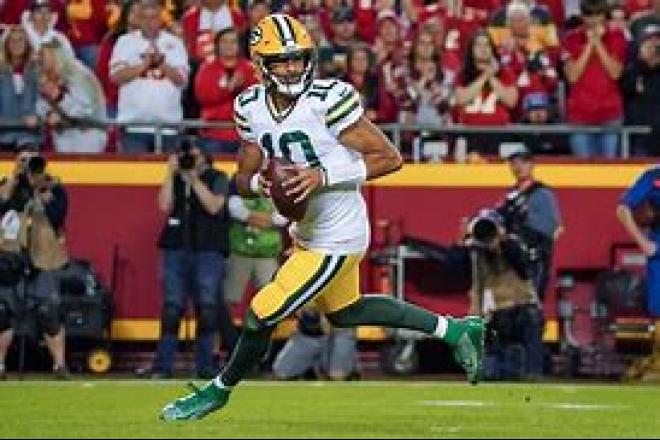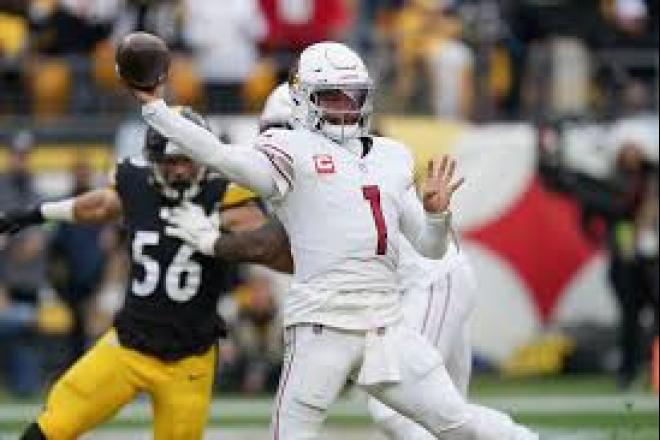Welcome back to a captivating chapter of Dynasty Diaries, where the art of fantasy football is woven through intricate trades that mold dynasties. In this next article of our series, we'll dive deep into the realms of player valuation, the finesse of negotiation, and the strategic execution of deals. Join me as I unravel recent trades that have sculpted my dynasty team, delving into the motivations, analyses, potential pitfalls, and broader implications of each transaction. Many of these trades set me up for both the long and short-term, but most if not all were made after my fantasy championship run during the 2023 fantasy season. These trades are not listed in any particular order.
Additionally, as you will see below, some of my favorite and best trades are ones that involve trading down at a specific position from a starting player in order to acquire slightly lesser players and additional draft picks in return. You will also see one of my worst trades, which involves trading up for a supposed stud at a specific position. These type of trade up deals are rare for me, as one of my main strategies is to have as much depth as possible at as many positions as possible, with the most important being WR. In addition, the landscape of the NFL is so volatile at certain positions (specifically RB, QB, and TE) that today's backup could easily become tomorrow's starter.
In regards to getting the other owners to agree to these deals, most of the trades involved negotiation and back and forth for at least 2-3 days, and involved me being very specific as to who and what position and/or player I wanted ahead of time before even beginning any conversations. In situations where the other owner wanted specific players or picks from me, I found it easier to acquire multiple pieces of what I wanted, as many times the other owner was open to giving up more for the specific player and/or pick they desired. One other thing to note, timing of trades is important. For example, generally speaking it's easier and cheaper to acquire additional draft capital as part of a trade return during the NFL season than after. To that end, many of these deals were consummated before or during the season or near the trade deadline when other owners are looking to revamp their rosters for a rebuild or playoff push. Now, onto the trades!
Trade 1:Acquired QB Kyler Murray, WR Elijah Moore, and WR Rashee Rice for QB Daniel Jones and WR Michael Pittman:
In a seismic move that resonated across the fantasy football landscape, I orchestrated a trade sending Daniel Jones and Michael Pittman away in exchange for the electrifying trio of Kyler Murray, Elijah Moore, and Rashee Rice. Jones and Pittman, reliable contributors, paved the way for Murray's elite quarterback prowess and the promising talents of Moore and Rice. This trade showcased my commitment to securing proven elite talent while simultaneously fortifying the team's future with emerging prospects. With this league being a SuperFlex, my trading partner at the time was in need of another QB to help with his playoff aspirations, and Jones was coming off an excellent 2022 season. I was also looking for additional depth at the WR position, and both Rice and Moore seemed like natural fits to take over for Pittman, who at the time of this trade was having an excellent start to 2023. Also at the time of the trade, Jones had not yet gotten injured, and Murray was still on the IR for Arizona. Since my roster had both Jordan Love, Brock Purdy, and Russell Wilson at QB, I was in an excellent spot to acquire another QB and wait for him to come off of injury. That strategy was exactly what this was with Murray. This ended up being an excellent trade for me, as Rice ended up having almost as good of a year as Pittman, and Murray came back and performed admirably while Jones got hurt for the remainder of the year. This trade ended up as more than just a transaction; it's a strategic move positioning my team as a perennial contender with a blend of proven and potential stars.
Trade 2: Acquired RB Antonio Gibson and a 2026 Second Round Pick for RB Miles Sanders:
Navigating the ever-shifting landscape of running backs in dynasty leagues, I executed a trade that sent Miles Sanders packing in exchange for Antonio Gibson and a 2026 second-round pick. Sanders, a capable back, was swapped for Gibson's dual-threat abilities and the promise of future draft capital. Gibson's proven performance and multifaceted skill set added a layer of stability to my backfield. The inclusion of a future pick not only demonstrated my commitment to long-term planning but also provided a valuable asset for future maneuvers. Although the trade carries the inherent risk of future uncertainties, the strategic evaluation of potential makes it a calculated move towards sustaining success. This trade was made early in the 2023 fantasy football season, when Sanders was still the starting RB for the Panthers. A trade like this is one that I love to make. Essentially I was able to tier down from a starting RB at the time (Sanders), to a timeshare back (Gibson) plus future draft capital as insurance. This deal is also a perfect example of how quickly the RB landscape can change, as two weeks after this trade occurred, Sanders lost his starting job in Carolina to backup Chubba Hubbard. This deal wasn't merely about the present; it was also about planting seeds that will bear fruit in seasons to come.
Trade 3: Acquired WR Tee Higgins and WR Jalin Hyatt for WR DeVonta Smith:
The decision to trade stud receiver DeVonta Smith for Tee Higgins and Jalin Hyatt was rooted in a strategic evaluation of the broader team dynamic. Smith's volatility was traded for Higgins' potential for future production and Hyatt's burgeoning talent, enhancing the depth of my receiving corps. The move emphasized the importance of diversifying assets and recognizing the value of established players. Looking into the crystal ball once more, I envision the potential of Tee Higgins continuing to blossom as a reliable target and the prospect of Jalin Hyatt emerging as a game-changer. The trade isn't just about the present; it's a chess move positioning my dynasty team for sustained success. This trade was made near the end of the 2023 fantasy football season, when my squad was on the verge of making the playoffs for the second year in a row. Despite falling short of my playoff aspirations, at the time of the deal Higgins was coming back from injury and Smith had a tough remaining NFL schedule. As a result, part of my logic was that if Higgins came back, in theory he would be able to provide more production than Smith in time for a deep playoff run. Additionally, with Higgins’ impending free agency, I wanted to acquire him in order to see how his offseason progresses, as his value could skyrocket. In that regard, Hyatt was more of a throw-in. While the deal itself was solid, it remains to be seen how long either of these players will remain on my fantasy team.
Trade 4: Acquired Darren Waller for Trey McBride & 2025 2nd Round Pick:
In the pursuit of securing a premier tight end, I made a bold move by acquiring Darren Waller at the expense of Trey McBride and a 2025 second-round pick. Waller's consistent elite production addressed the scarcity at the tight end position. However, the trade involved parting ways with McBride, a promising prospect, and a valuable draft pick. The potential downside lay in the sacrifice of future assets for immediate impact, and the success of the trade hinged on Waller's continued performance and ability to remain healthy. As I scrutinize the crystal ball, the acquisition of Darren Waller is akin to unlocking a treasure trove of fantasy points at the tight end position. Waller's dominance (when healthy) transformed my tight end spot from a question mark to an exclamation point. Even though this trade encapsulates the delicate dance between immediate impact and long-term investment that defines the intricate game of dynasty fantasy football, it ended up being one of the worst deals I’ve ever made, as Waller couldn’t stay healthy (again), and McBride blossomed into an elite option at the tight end position. Moving forward, I’m looking at moving Waller off of my roster in an effort to recoup some of the lost production, and I should’ve known that his ability to stay on the field for an extended period of time is sketchy at best. This trade was an example of getting caught up a bit in preseason hype, as this deal was consummated prior to the 2023 season. Note to self: In dynasty, pay attention to player news to know what’s happening, but don’t get so caught up in the news that it clouds long-term judgment.
Trade 5: Acquired WR Christian Kirk and WR Mike Williams for QB Russell Wilson:
The decision to trade veteran quarterback Russell Wilson required a delicate balance between immediate success and long-term planning. Acquiring Christian Kirk and Mike Williams fortified my receiving corps with proven playmakers and added additional depth. This move revealed my commitment to roster flexibility and the strategic allocation of resources. Evaluating the quarterback landscape, I leveraged Wilson's value to enhance my skill positions, aligning with a broader team-building strategy. This trade was made at the deadline of the 2023 season. At the time, I was in the running for a playoff berth and already had three reliable quarterbacks on my roster in Brock Purdy, Jordan Love, and Kyler Murray. To that end, I was a bit light on depth at the WR position at the time due to injury, and felt Wilson was the worst QB of the four due to a combination of age, production (even though he was playing well), and team dynamics. While parting ways with Wilson posed a potential risk at the quarterback position, the calculated move reflected my confidence in navigating the evolving dynamics of the fantasy football landscape. Kirk's ability to stretch the field and Williams' knack for making big plays meshed seamlessly with my vision for a dynamic and deep receiving core. The strategic vision guiding this trade paints a vivid picture of a dynasty team poised for sustained success. One note: another reason I wanted Williams was that even though he was injured and out for the year when I acquired him, I felt he gave me many options heading into the offseason. I could keep him for 2024 or trade him for other players and/or draft capital, thus increasing my team’s depth even more. Thus the move to include him as another piece of the deal became a no-brainer.
In this sprawling epic of dynasty fantasy football, mastering the nuanced art of trades is a tale told over many transactions. The showcased trades unveiled my strategic approach to roster construction, blending proven talent with emerging stars, and addressing positional needs with calculated precision. As I navigate the twists and turns of the fantasy football landscape, the Dynasty Diaries saga continues to evolve. Next time we will look at roster injury management, and part of my strategy to address how I navigate through injuries, handle IR spots, and make decisions to maintain a competitive edge. Stay tuned for deeper insights, evolving strategies, and the unfolding narrative in the next chapter of Dynasty Diaries. Until then, may your trades be shrewd and your dynasty aspirations be fulfilled. Happy trading!





